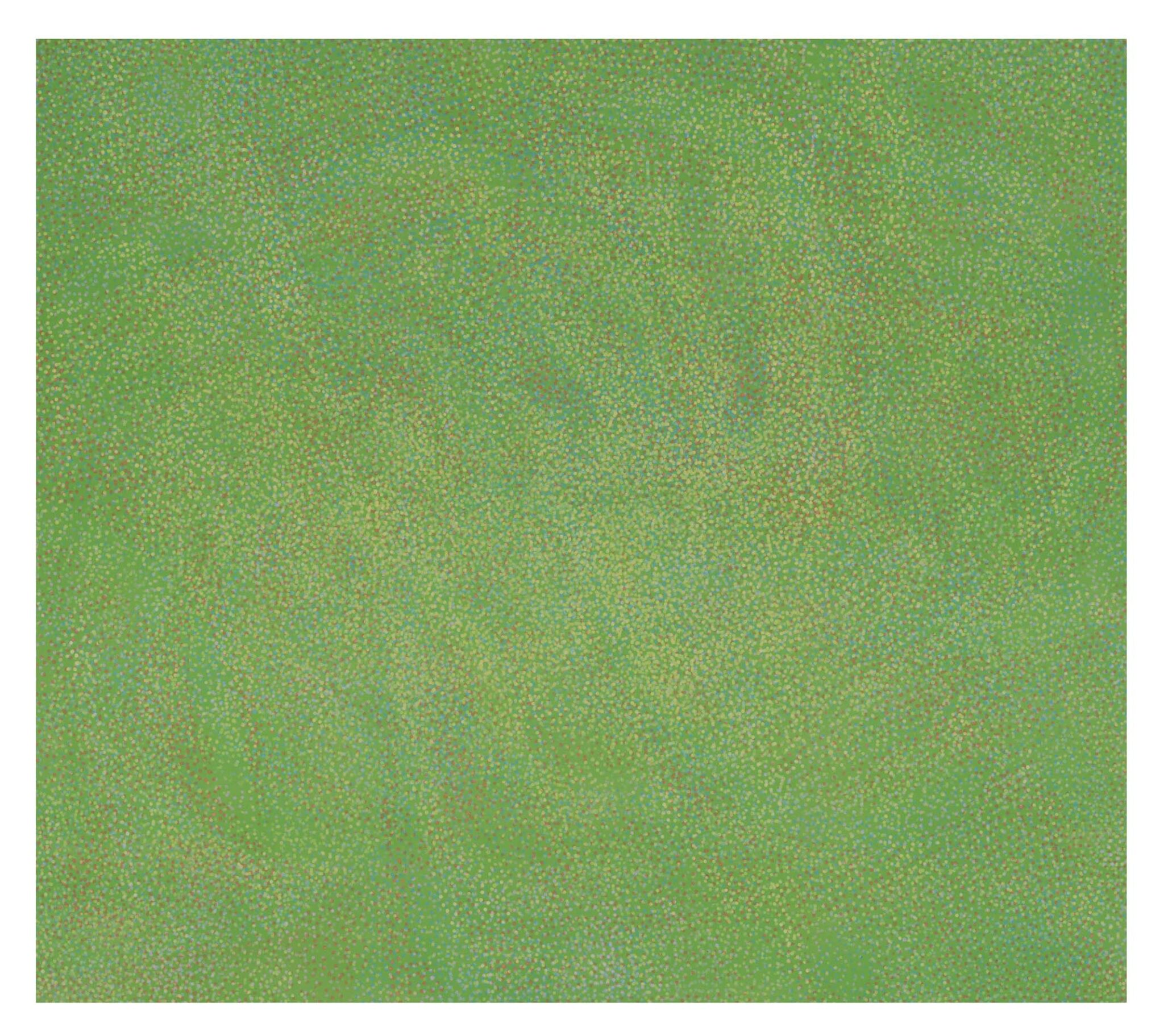In the early 1970s, Howardena Pindell began a pivotal series of Spray Dot paintings. Pindell began spraying paint onto large canvases through hole-punched cardstock templates, subtly varying the color with each pass. The layers of vibrant dots resulted in an elaborate, sensuous interplay between background and foreground with endless fluctuations of color and light. These early paintings served as progenitors of much of her abstract work to follow: presciently, the artist saved the punched paper dots and, years later, began incorporating them into her work. Pindell continues to make variations of these delicate, monumental constructions and in recent years has also revisited her Spray Dot technique.
As one of a small group of pioneering African American abstractionists including Al Loving, Sam Gilliam, Jack Whitten, and Frank Bowling, Pindell occupied a thankless territory for decades, making work that was not explicitly about the black experience while being excluded from the overwhelmingly white institutions that dominated abstraction. The difficult experience sharpened the artist’s lifelong political and social activism.
Born in Philadelphia in 1943, Howardena Pindell studied painting at Boston University and Yale University. After graduating, she accepted a job at the Museum of Modern Art, where she worked from 1967–1979. The role made her the museum’s first African American curator. In 1979, Pindell began teaching at the State University of New York, Stony Brook.
Pindell has exhibited extensively. In 2018, the Museum of Contemporary Art, Chicago mounted Howardena Pindell: What Remains to Be Seen, which traveled to the Virginia Museum of Fine Arts and the Rose Art Museum. Pindell’s work has been featured in many landmark museum exhibitions, such as: Contemporary Black Artists in America (1971, Whitney Museum of American Art), and Afro-American Abstraction (1980, P.S.1 Contemporary Art Center). Pindell’s work is in the permanent collections of major museums internationally, including: the Brooklyn Museum; the High Museum of Art, Atlanta; the Louisiana Museum of Modern Art, Copenhagen; the Metropolitan Museum of Art; the Museum of Contemporary Art, Chicago; the Museum of Modern Art, New York; Museum of Fine Arts, Houston; the National Gallery of Art, Washington, D.C.; The Studio Museum in Harlem; and the Whitney Museum of American Art, among others.
[excerpted from Garth Greenan Gallery website: www.garthgreenan.com]
